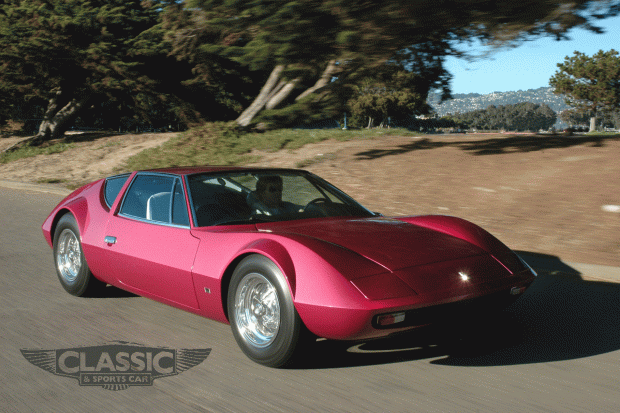It was a messy end to the relationship, but the birth of one of the most fascinating, often baffling, motoring stories. The entire Monteverdi marque is shrouded in a certain amount of mystery, production and performance numbers traditionally bandied around with scant regard for fact, creating one of the most charismatic of the supermarques that burned brightly but briefly. In retrospect, it seems that Monteverdi wanted to be Ferruccio Lamborghini but turned out as a less successful Alejandro de Tomaso. That’s no bad thing, bearing in mind that – ATS aside – De Tomaso’s Vallelunga was the real mid-engined trailblazer. Monteverdi’s Hai wasn’t far behind – only Vallelunga, Miura and arguably Dino beat it into ‘production’ – with the added, delicious incongruity of being Swiss. From such a car-hating nation, it was as unlikely as it was sensational and it remains an enigma, a suicidal business venture that, even today, is hotly disputed whether it was ever actually intended to be sold.

Its downfall may have been the very reason it worked: the crated Chrysler engine that pumped away faithfully amidships and bestowed upon the Hai the hybrid status of such marques as Jensen and Gordon-Keeble rather than the purity of the Italian thoroughbreds it sought to vanquish. Yet none of the above comes with quite so many difficult questions as the Hai. Who really styled it? How many were built? Which is which? Was it ever for sale? And the biggie: does it work?

To dispatch the first, the paperwork might be copyrighted to Peter Monteverdi – who never relented in his ownership claims over the shape – but Trevor Fiore (Frost) has unequivocally stated that the Hai was his own. Which makes sense, Fiore being a familiar figure at Fissore at the time. He was working on an unrealised Alpine A110 replacement before a visiting Monteverdi – who then had a 50% stake in the firm – saw the sketches and ‘borrowed’ them. Certainly there is a resemblance to the A310, but no more so than to a Mangusta or Pantera in some aspects.

Either way it is something to behold, the front end plunging towards the floor, the sculpted haunches rising over the wheels with sharp-edged brutalism. From that angle it so lives up to its name – hai is German for shark – that it seems as tautological a sobriquet as if the current Mercedes CLS were called the Giant Grouper. Elsewhere, it looks less carcharian than crustacean, that hunched, crab-like rear end in bulbous contrast to the crisp minimalism of the front. From the side this juxtaposition works perfectly, the triangular rear quarterlights adding to the arrowhead effect. And rounding it all off is a quartet of exhaust stubs that burst out of the back like cooling towers for the fires of hell.

Next up, questions two to four inclusive. Peter Monteverdi claimed that 12-14 cars were built, but we now know that there were four, of which two can easily be dismissed, perhaps generously, as ‘continuation’ cars. This example was the first, the ‘prototype’ betrayed by its centre-lock Borranis and 50mm shorter wheelbase. First shown at Geneva in 1970 as the Hemi-powered 450SS (450 for its claimed horsepower, SS for Super Sports), its colour and trim were changed several times as it strutted its stuff on the show circuit. It finally escaped Monteverdi’s clutches in November ’71 when it was sold to Karl-Heinz Schuberth. It passed through a succession of European owners before being sold in the ’80s to Norbert McNamara, who had it restored at Fissore, sprayed copper and shipped to the USA. A decade on it was acquired by Bruce Milner, who paid nigh-on $300,000 for it and embarked on a programme to return it to 1970 spec.

The colour then, as now, was Monteverdi’s own Purple Smoke (though Haze might have been more appropriate given the era). Also reinstated were the chromed glass surrounds, the off-white interior, black engine cover, facia detailing, Blaupunkt Köln radio and refabricated three-spoke Personal wheel with Monteverdi-crested horn-push. It appeared at Pebble Beach in this guise last year – third in class – having previously graced those exclusive lawns in 1989.













